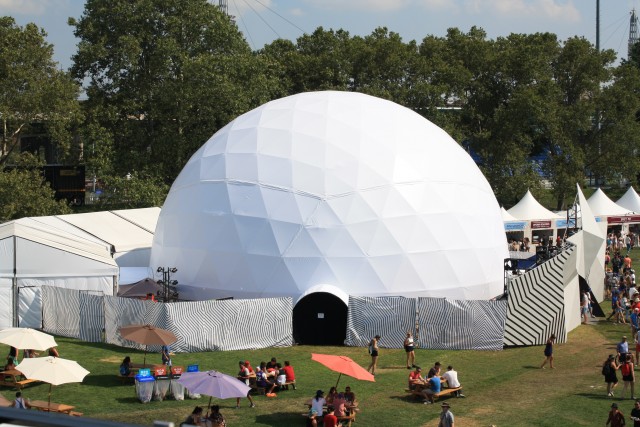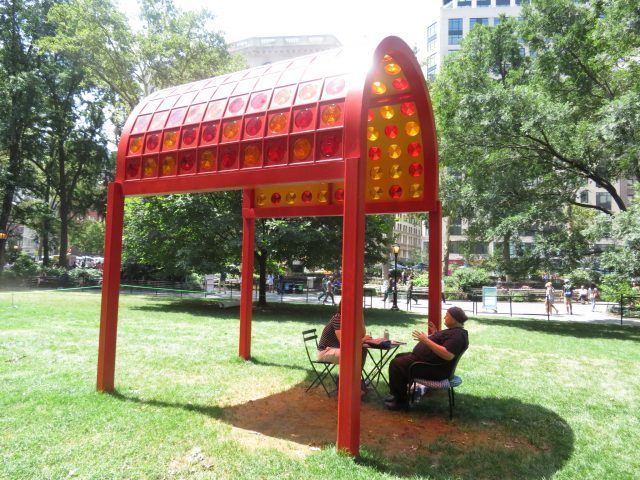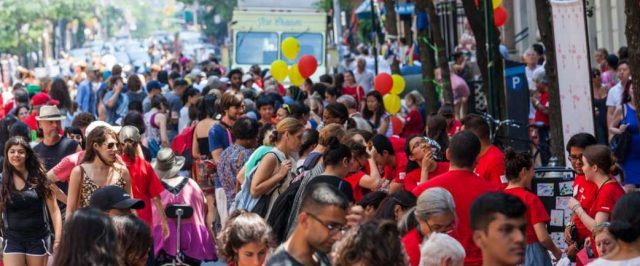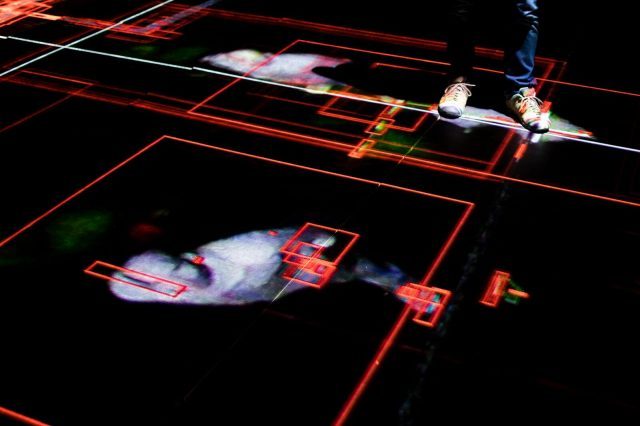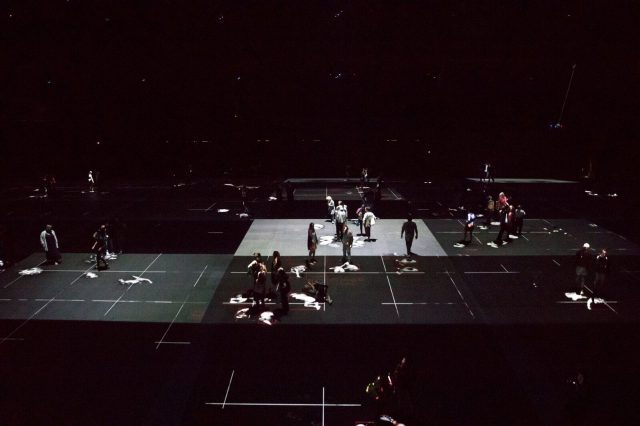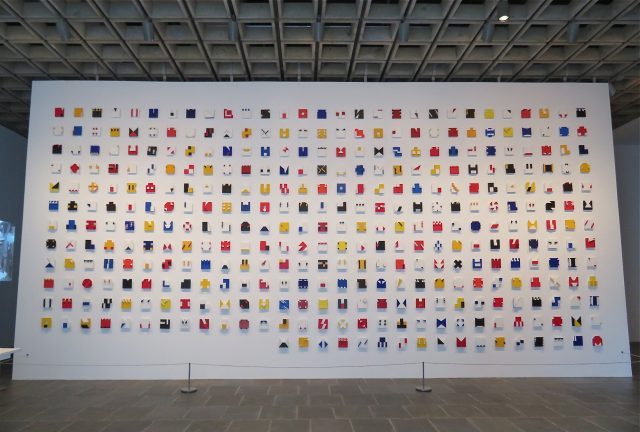
Lygia Pape, “Livro do tempo” (“Book of Time”), tempera and acrylic on wood, 365 parts, 1961-63 (photo by twi-ny/mdr)
The Met Breuer
945 Madison Ave. at 75th St.
Through July 23, suggested admission $12-$25
212-731-1675
www.metmuseum.org
www.lygiapape.org
There’s only a few more days to see the best current exhibition in New York City by an artist you’ve never heard of but need to. Continuing at the Met Breuer through Sunday, “Lygia Pape: A Multitude of Forms” is the first retrospective of multidisciplinary Brazilian artist Lygia Pape, who passed away in 2004 at the age of seventy-seven. “My concern is always invention. I always want to invent a new language that’s different for me and for others, too,” she said. “I want to discover new things. Because, to me, art is a way of knowing the world . . . to see how the world is . . . of getting to know the world.” The show opens up a whole new world of invention, a wonderland of geometric form, color, time, and space, consisting of a wide range of drawing, woodcuts, painting, sculpture, film, dance, installation, and performance art taking on the personal and the political, the psychological and the cultural. During her five-decade career, Pape (pronounced pah-PAY) was part of the Concretists, Grupo Frente, and Neoconcretism, pushing the boundaries of the picture plane as she merged genres in unique ways. Her “Pinturas,” “Relevos,” and “Tarugos” demonstrate the development of her style, as square boxes, horizontal bars, and skewed lines eventually emerge from her canvas, creating a three-dimensionality that invades the viewer’s space. Her woodcuts, called “Tecelares,” and ink drawings, known as “Desenhos,” furthered her geometric abstraction, while her “Poema-objetos” turned paper into sculpture, leading to such works as “Livro da criação” (“Book of Creation”), a facsimile of which visitors can engage with, offering an alternate view of their surroundings.

Lygia Pape, “Roda dos prazeres” (“Wheel of Pleasures”), porcelain vessels, droppers, distilled water, flavorings, and food coloring, 1967 (photo by twi-ny/mdr)
In the short 1967 film O ovo (“The Egg”), Pape breaks through a white box on the beach. In “Divisor” (“Divider”), dozens of heads jut out from a huge white sheet as the participants walk through the streets of Rio de Janeiro. “Ballet neoconcreto I” and “Ballet neoconcreto II” might look like an experimental film of moving geometric shapes but instead are recordings of live performances in which dancers are actually inside the forms, guiding them. “Her trajectory, especially in the 1960s and 1970s, was informed by the irreverence of underground cinema and the influence of vernacular and indigenous cultures and shaped by a strong awareness of her role as a woman artist,” Glória Ferreira explains in her exhibition catalog essay. “Roda dos prazeres” (“Wheel of Pleasures”) is activated at specific times, allowing museumgoers to taste the colored liquids arranged in a circle of bowls, each a different flavor. The massive “Livro do tempo” (“Book of Time”) features 365 painted blocks, as if each day is represented by a new semaphore. “Banquete tupinambá” (“Tumpinamba Banquet”) consists of a wooden table and two chairs covered in red feathers, a lightbulb dangling over it, two polyurethane breasts almost hidden within the work. In its own room is “Ttéia 1, C,” a mesmerizing installation of golden thread pouring down like gorgeous sunlight in the darkness. And yes, those are mummified cucarachas in “Box of Cockroaches.” Much of Pape’s oeuvre is tinged with but not overwhelmed by sociopolitical messages; in fact, she was imprisoned for three months in 1973 for her political activities in a country that experienced tremendous upheaval during her lifetime. But that didn’t stop Pape from doing what she does best, creating remarkable art while existing on the fringes. “I always enjoyed marginality. I made a point about staying in the periphery. I was very much an anarchist,” Pape noted in 2000. “Marginality . . . is a bourgeois concept,” she also wrote. There is nothing marginal or bourgeois about this revelatory exhibition. (For more on Lygia Pape and the show, which is beautifully curated by Iria Candela, you can watch the May 4 Met symposium “To Live Is to Invent: Perspectives on the Art and Times of Lygia Pape” here.)
